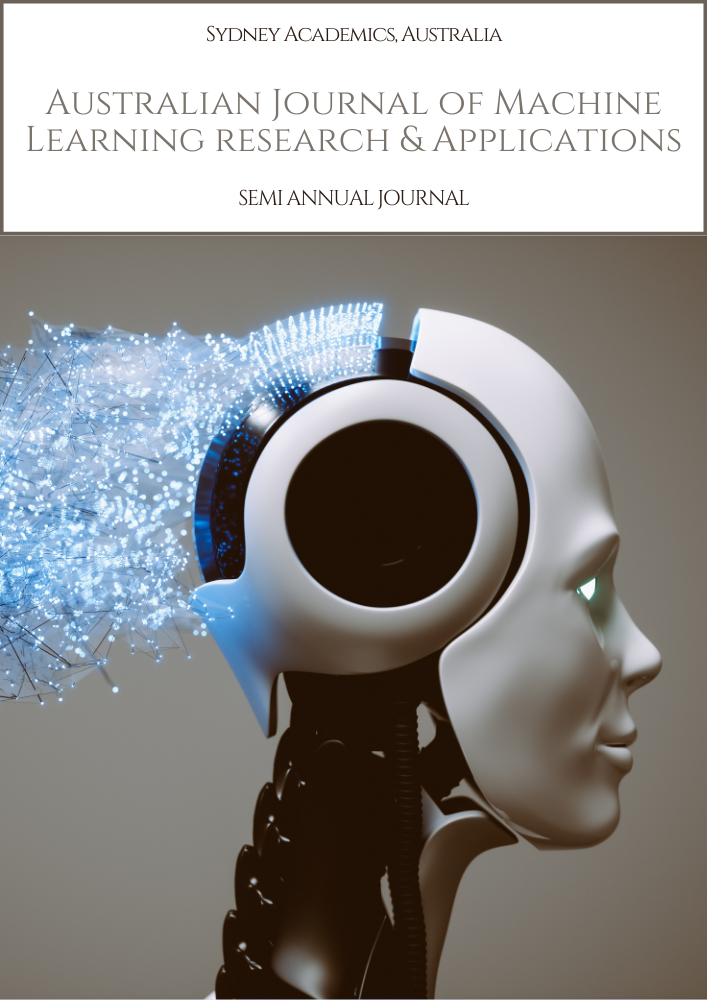Artificial Intelligence Self-Healing Capability Assessment in Microservices Applications deployed in AWS using Cloud watch and Hystrix
Keywords:
Microservice, Cloud Migration, Containerization Distributed Systems, Microservice SecurityAbstract
Microservices architecture has gained significant traction in modern software development due to its scalability and flexibility. However, maintaining the reliability and availability of microservices applications in dynamic cloud environments remains a challenge. In this paper, we investigate the effectiveness of artificial intelligence (AI)-driven self-healing capabilities in microservices applications deployed on Amazon Web Services (AWS), utilizing AWS CloudWatch for monitoring and Hystrix for fault tolerance. We begin with a comprehensive literature review, examining existing self-healing mechanisms in microservices and previous research on AI-driven fault detection and recovery. Additionally, we provide an overview of AWS CloudWatch's monitoring features and Hystrix's role in enhancing fault tolerance. Our methodology involves the assessment of self-healing capabilities using predefined criteria, implemented through experimentation in an AWS environment. We describe the setup of microservices architecture, configuration of CloudWatch alarms, and integration of Hystrix for fault tolerance. Furthermore, we detail the implementation of AI algorithms for real-time analysis of monitoring data. Through empirical results and analysis, we demonstrate the efficacy of AI-driven self-healing in detecting and mitigating faults in microservices applications. We compare the performance of AI-driven approaches with traditional methods, highlighting the advantages and limitations of each. Additionally, we evaluate the effectiveness of CloudWatch and Hystrix in maintaining system health. This research contributes to the understanding of AI-driven self-healing capabilities in microservices applications, providing insights into the practical implementation and assessment of self-healing mechanisms in dynamic cloud environments. Our findings offer valuable implications for enhancing the resilience and reliability of microservices architectures in modern software systems.
Downloads
References
Tatineni, Sumanth. "Applying DevOps Practices for Quality and Reliability Improvement in Cloud-Based Systems." Technix international journal for engineering research (TIJER)10.11 (2023): 374-380.
O. Arafat, and D. Riehle, “The Commit Size Distribution of Open Source Software,” Proc. the 42nd Hawaii Int’l Conf. Syst. Sci. (HICSS’09), USA, pp. 1-8, 2009.
C. Kolassa, D. Riehle, and M. Salim, “A Model of the Commit Size Distribution of Open Source,” Proc. the 39th Int’l Conf. Current Trends in Theory and Practice of Comput. Sci. (SOFSEM’13), Czech Republic, pp. 52–66, 2013.
L. Hattori and M. Lanza, “On the nature of commits,” Proc. the 4th Int’l ERCIM Wksp. Softw. Evol. and Evolvability (EVOL’08), Italy, pp. 63–71, 2008.
P. Hofmann, and D. Riehle, “Estimating Commit Sizes Efficiently,” Proc. the 5th IFIP WG 2.13 Int’l Conf. Open Source Systems (OSS’09), Sweden, pp. 105–115, 2009.
Kolassa C., Riehle, D., and Salim M., “A Model of the Commit Size Distribution of Open Source,” Proceedings of the 39th International Conference on Current Trends in Theory and Practice of Computer Science (SOFSEM’13), Springer-Verlag, Heidelberg, Baden-Württemberg, p. 5266, Jan. 26-31, 2013.
Arafat O., and Riehle D., “The Commit Size Distribution of Open Source Software,” Proceedings of the 42nd Hawaii International Conference on Systems Science (HICSS’09),” IEEE Computer Society Press, New York, NY, pp. 1-8, Jan. 5-8, 2009.
R. Purushothaman, and D.E. Perry, “Toward Understanding the Rhetoric of Small Source Code Changes,” IEEE Transactions on Software Engineering, vol. 31, no. 6, pp. 511–526, 2005.
A. Singh, V. Singh, A. Aggarwal and S. Aggarwal, "Improving Business deliveries using Continuous Integration and Continuous Delivery using Jenkins and an Advanced Version control system for Microservices-based system," 2022 5th International Conference on Multimedia, Signal Processing and Communication Technologies (IMPACT), Aligarh, India, 2022, pp. 1-4, doi: 10.1109/IMPACT55510.2022.10029149.
A. Alali, H. Kagdi, and J. Maletic, “What’s a Typical Commit? A Characterization of Open Source Software Repositories,” Proc. the 16th IEEE Int’l Conf. Program Comprehension (ICPC’08), Netherlands, pp. 182-191, 2008.
A. Hindle, D. Germán, and R. Holt, “What do large commits tell us?: a taxonomical study of large commits,” Proc. the 5th Int’l Working Conf. Mining Softw. Repos. (MSR’08), Germany, pp. 99-108, 2008.
V. Singh, M. Alshehri, A. Aggarwal, O. Alfarraj, P. Sharma et al., "A holistic, proactive and novel approach for pre, during and post migration validation from subversion to git," Computers, Materials & Continua, vol. 66, no.3, pp. 2359–2371, 2021.
Vinay Singh, Alok Aggarwal, Narendra Kumar, A. K. Saini, “A Novel Approach for Pre-Validation, Auto Resiliency & Alert Notification for SVN To Git Migration Using Iot Devices,” PalArch’s Journal of Arch. of Egypt/Egyptology, vol. 17 no. 9, pp. 7131 – 7145, 2020.
Vinay Singh, Alok Aggarwal, Adarsh Kumar, and Shailendra Sanwal, “The Transition from Centralized (Subversion) VCS to Decentralized (Git) VCS: A Holistic Approach,” Journal of Electrical and Electronics Engineering, ISSN: 0974-1704, vol. 12, no. 1, pp. 7-15, 2019.
Ma Y., Wu Y., and Xu Y., “Dynamics of Open-Source Software Developer’s Commit Behavior: An Empirical Investigation of Subversion,” Proceedings of the 29th Annual ACM Symposium on Applied Computing (SAC’14), pp. 1171-1173, doi: 10.1145/2554850.2555079, 2014.
M. Luczak-R¨osch, G. Coskun, A. Paschke, M. Rothe, and R. Tolksdorf, “Svont-version control of owl ontologies on the concept level.” GI Jahrestagung (2), vol. 176, pp. 79–84, 2010.
E. Jim´enez-Ruiz, B. C. Grau, I. Horrocks, and R. B. Llavori, “Contentcvs: A cvs-based collaborative ontology engineering tool.” in SWAT4LS. Citeseer, 2009.
I. Zaikin and A. Tuzovsky, “Owl2vcs: Tools for distributed ontology development.” in OWLED. Citeseer, 2013.


